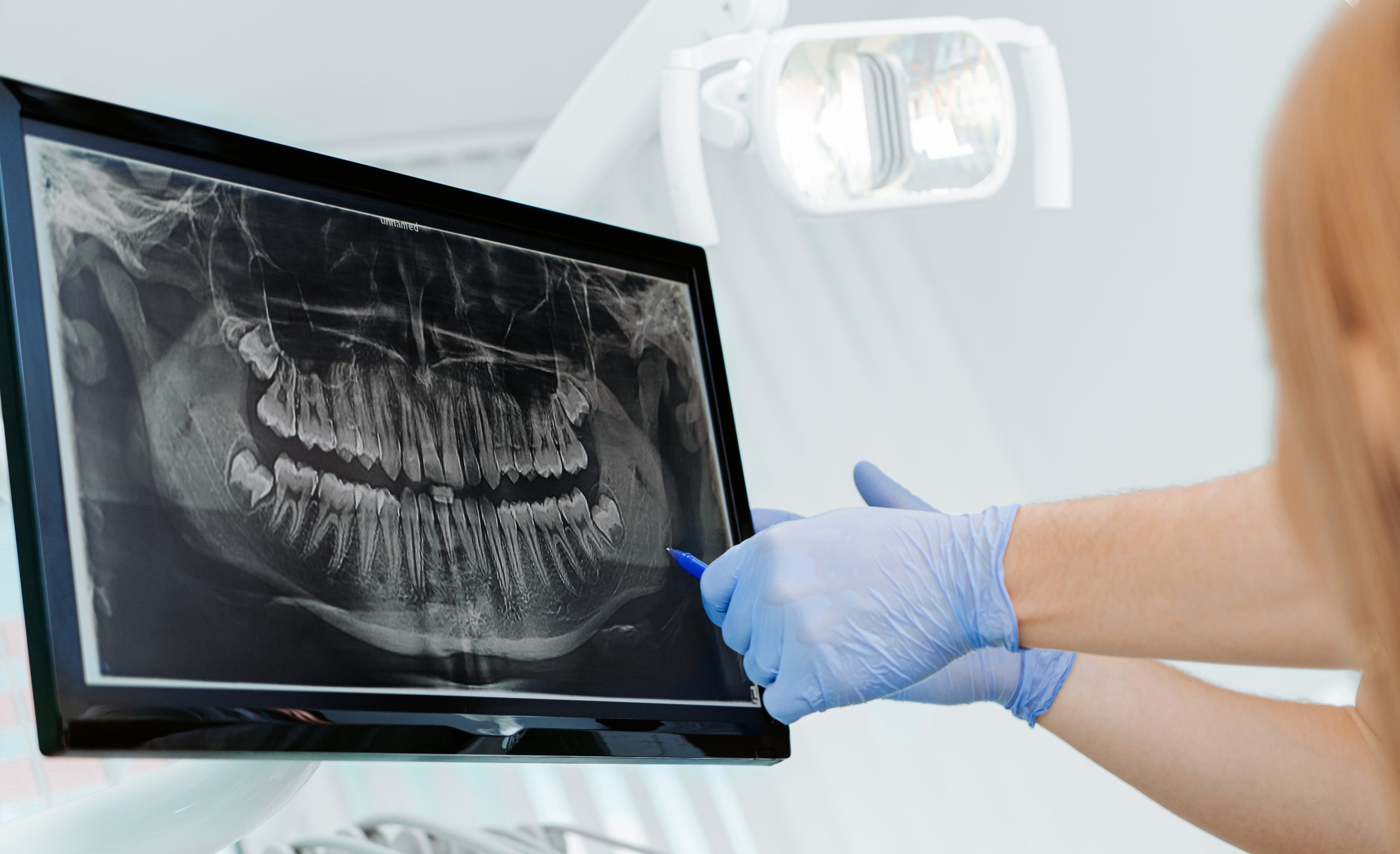Numbering System Miscommunication Leads to Extraction Mistake
Case Study
Marc Leffler, DDS, Esq.
November 27, 2023
Reading time: 5 minutes

In dental practices, there are a variety of numbering systems that are used to identify teeth, which can lead to miscommunication and mistakes. In this case study, an orthodontist refers a patient to their general dentist for a tooth extraction. Upon receipt of the referral, there is a miscommunication with the orthodontist’s staff and the dentist mistakenly extracts the incorrect tooth.
Key Concepts
- Dental numbering systems
- Preventing staff miscommunication
- Extraction of incorrect tooth
Background Facts
Dr. O, an orthodontist, evaluated his 14-year-old female patient, L, for potential orthodontic care. Following the taking and assessment of records, and clinical examination, he determined that L had a dental Class II, Division I malocclusion, with a deviation of the maxillary teeth to the left of midline, owing to a congenitally missing upper left premolar, for which she would require extraction of an upper right premolar in advance of orthodontic movement. He referred L back to her general dentist, Dr. G, for that extraction. In preparation for the extraction, he handed L’s mother a referral card to give to Dr. G, which stated “please ext 5 for ortho”, but he placed a circle around what appeared to be at least a portion of both upper right premolars on the form’s schematic.
At the planned extraction visit, Dr. G was confused by the unclear identification of the tooth Dr. O wanted removed. So, Dr. G asked her office manager to call Dr. O’s office to confirm which tooth he wanted removed. Upon receiving that call, Dr. O’s receptionist looked at L’s chart and advised that Dr. O wanted the extraction of “4 on the upper right”. In reality, Dr. O had made a handwritten note in the chart to “ext UR4”.
Based upon what her office manager then communicated back to her, Dr. G told L’s mother that she would be extracting tooth #4, and had her sign a printed consent form which stated just that. Dr. G then uneventfully extracted tooth #4.
On L’s next visit to Dr. O, he questioned L’s mother as to why Dr. G had extracted a different premolar than the one he had requested. L’s mother said she had no idea of which tooth was removed, simply agreeing to what Dr. G had said to her in advance of the surgery. Dr. O said he would still be able to accomplish his planned treatment, but because of the local anatomy of the maxillary alveolar bone, the orthodontics would take some 3-4 months longer than initially anticipated.
Immediately following the visit, Dr. O called and spoke with Dr. G directly to ask why she removed the upper right second premolar instead of the first premolar. Dr. G apologized but explained the unclear referral card and the call between her office manager and Dr. O’s receptionist.
Legal Action
That evening, L’s mother explained the entire mistaken extraction situation to L’s father, an attorney. He became incensed and sent out records requests the next day, to both Drs. G and O. Upon receiving the records, he was unable to discern what had happened, so he contacted a local dentist from whom his partner had once obtained an expert opinion.
The dentist reviewed the records and explained to L’s father that there are several numbering systems used by dentists to identify teeth, so confusion can sometimes exist, especially in the upper right quadrant of the mouth, where tooth #4 is also known as the UR5, and tooth #5 is also referred to as the UR4.
This dentist explained that a simple, but important, miscommunication had occurred between the dental offices, which led to the wrong tooth having been extracted. However, it appeared as though Dr. O would be able to accomplish a satisfactory result in any event, with the only ramification being a delay in the completion of treatment. L’s father opted against taking any legal action, but obtained a different orthodontist, who was able to successfully complete the “backup” treatment plan.
Takeaways
As the dentist consulted by L’s father noted, the various numbering systems used by dentists to identify teeth can be confusing, thereby leading to treatment errors. In addition to the Universal System (#1-32) and the Palmer Quadrant System (UR/UL/LL/LR 1-8), a diminishing number of dentists use the FDI System, which categorizes the quadrants as 1-4, and then assigns the teeth numbers 1-8, starting with the central incisors and moving posteriorly. It is for this reason that it is critical before performing any irreversible procedure, such as an extraction, that there be 100% certainly as to the proper tooth being treated; this is particularly the case when healthy teeth are removed, as for orthodontic purposes.
In this situation, a significant part of the problem can be attributed to the fact that non-professional dental office staff were the only people to have communicated prior to the extraction having been performed. As we have noted in prior case studies, the roles of those staff members in the efficient running of dental practices cannot be overstated, but any issue which requires any type of clinical assessment is appropriately handled by dentists, to the exclusion of non-professional staff members; that affords the best chance to avoid dental treatment errors which arise from miscommunications or other administrative failings. While the error here was able to be remedied with relatively little impact upon the patient, thereby negating litigation, the fact remains that a negligent act occurred which was easily avoidable.
Surgeons who operate in hospitals and ambulatory surgery centers routinely stop before starting surgery and take what is known as a “time out”, during which patient identity, surgical location, and the anticipated procedure are confirmed by multiple people present, including one or more surgeons, and generally at least one support staff member. Dentists who practice in private offices are far less likely to perform a “time out” before beginning their treatments, and that creates a greater potential for simple administrative errors to result in significant problematic after-effects. Similarly, dentists can further reduce mistakes of the type demonstrated here by encouraging their assistants to alert them if they even suspect that an error is about to be made; pre-determined, non-alarming code words can be established between dentist and staff so as not to upset patients, while still maximally protecting their well-being.
Finally, we note that Dr. O abided by his ethical obligation in advising L’s mother that a mistake had occurred, but he did so without a condemning criticism of Dr. G and with providing a solution. This is the very opposite of what we have referred to as “jousting”, and that type of professionalism goes a long way toward taking the temperature down when untoward, unfortunate events occur.
Note that this case presentation includes circumstances from several different closed cases, in order to demonstrate certain legal and risk management principles, and that identifying facts and personal characteristics were modified to protect identities. The content within is not the original work of MedPro Group but has been published with consent of the author. Nothing contained in this article should be construed as legal, medical, or dental advice. Because the facts applicable to your situation may vary, or the laws applicable in your jurisdiction may differ, please contact your personal or business attorney or other professional advisors if you have any questions related to your legal or medical obligations or rights, state or federal laws, contract interpretation, or other legal questions.
Additional Risk Tips content

IAN Injury After Local Anesthesia: Legal and Clinical Takeaways
Explore a real-world dental malpractice case involving inferior alveolar nerve (IAN) injury after local anesthesia. Learn key risk management principles, the role of informed consent, and how deposition testimony can influence case outcomes.

Canceled Joint Replacement Results from Dentist’s Lack of Awareness
Learn how a dentist’s lack of awareness of new protocols can lead to major inconveniences for a patient.

Difficult Patient Sues Dentist After Improper Dismissal and Jousting
This article explores a scenario where a dentist faces a malpractice claim and board complaint after improperly dismissing a difficult patient. Learn the essential steps for proper patient dismissal to protect your practice and license.
This document does not constitute legal or medical advice and should not be construed as rules or establishing a standard of care. Because the facts applicable to your situation may vary, or the laws applicable in your jurisdiction may differ, please contact your attorney or other professional advisors if you have any questions related to your legal or medical obligations or rights, state or federal laws, contract interpretation, or other legal questions.
MedPro Group is the marketing name used to refer to the insurance operations of The Medical Protective Company, Princeton Insurance Company, PLICO, Inc. and MedPro RRG Risk Retention Group. All insurance products are underwritten and administered by these and other Berkshire Hathaway affiliates, including National Fire & Marine Insurance Company. Product availability is based upon business and/or regulatory approval and/or may differ among companies.
© MedPro Group Inc. All rights reserved.